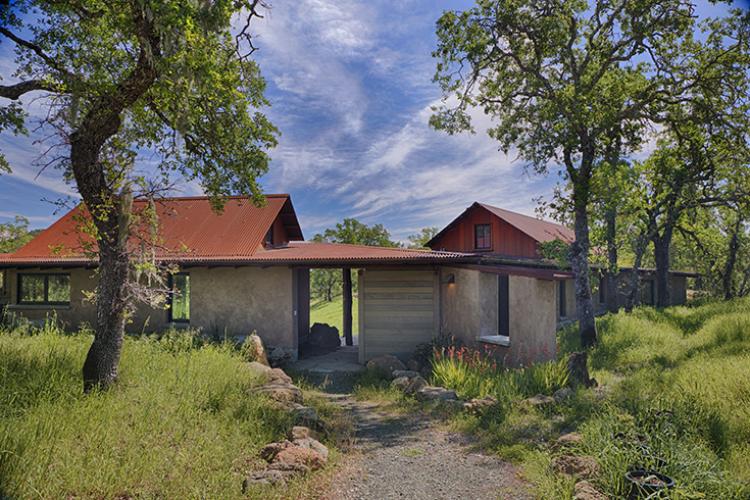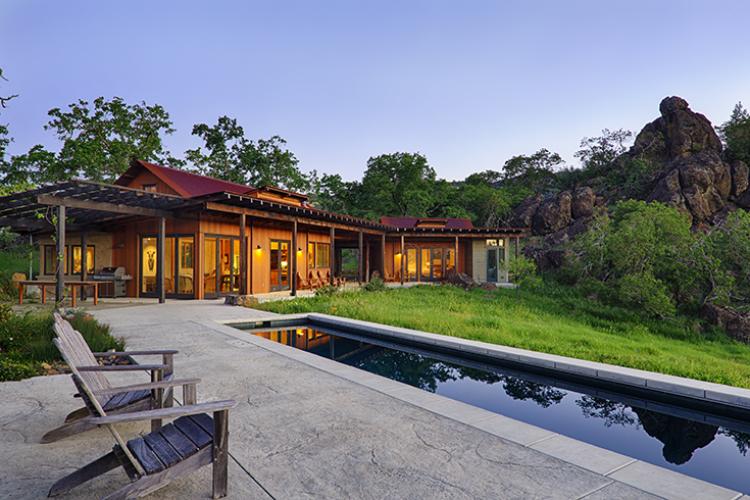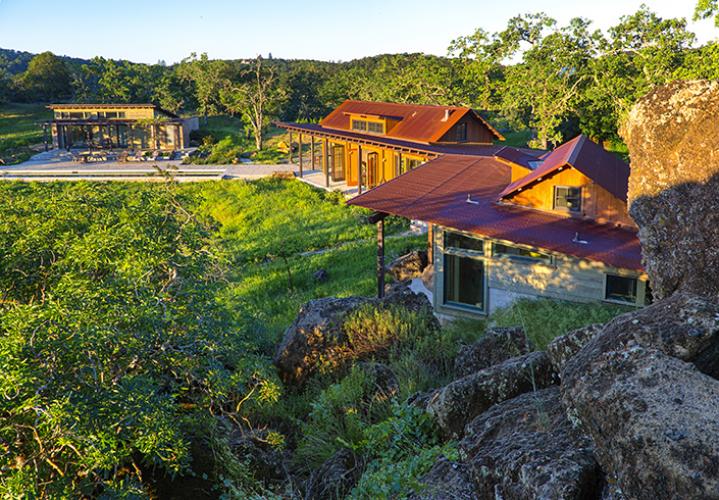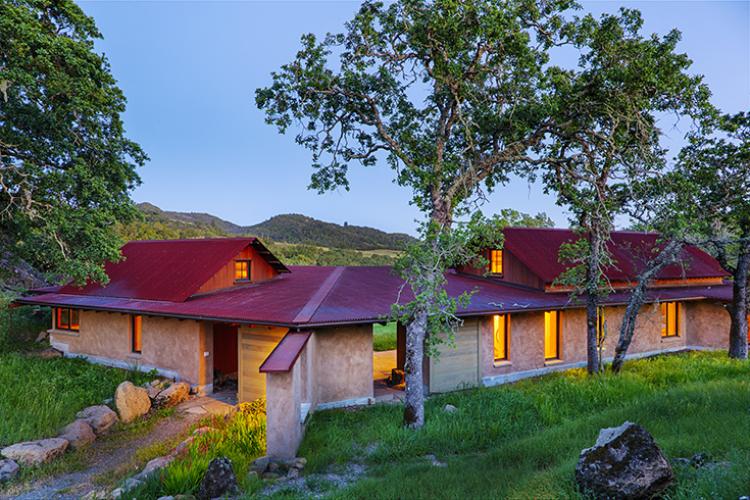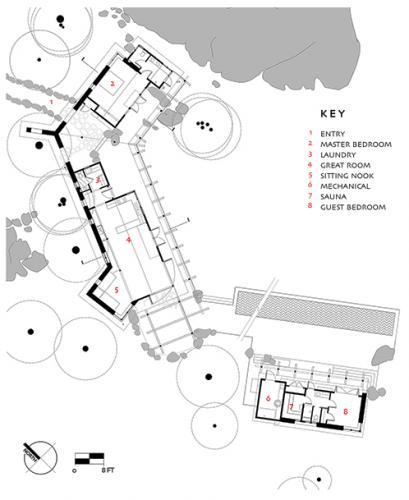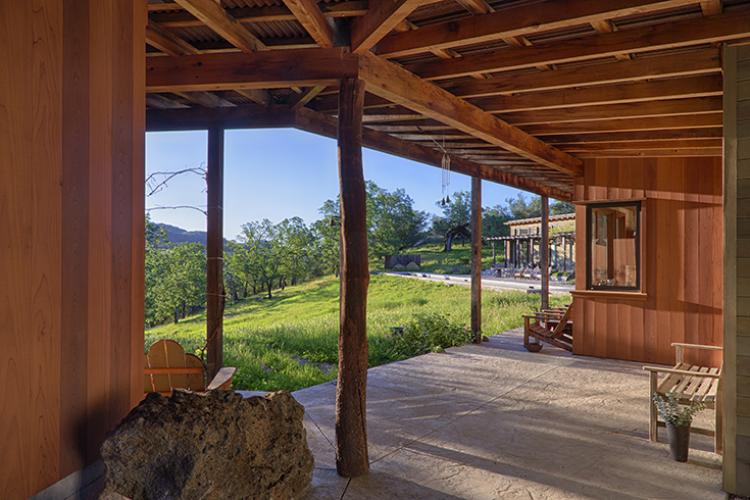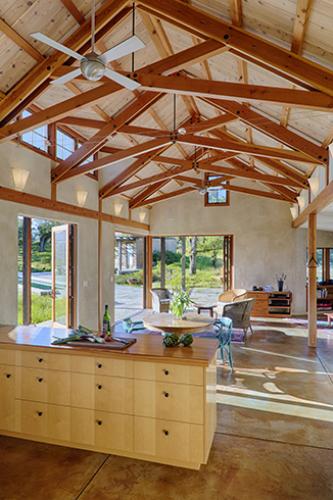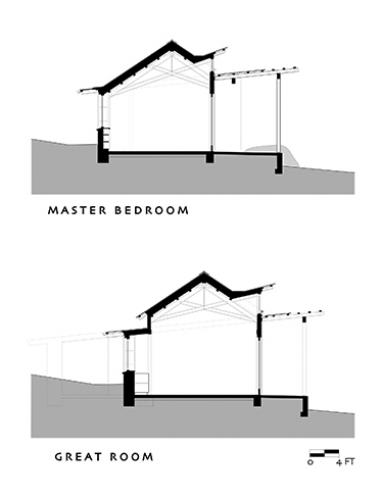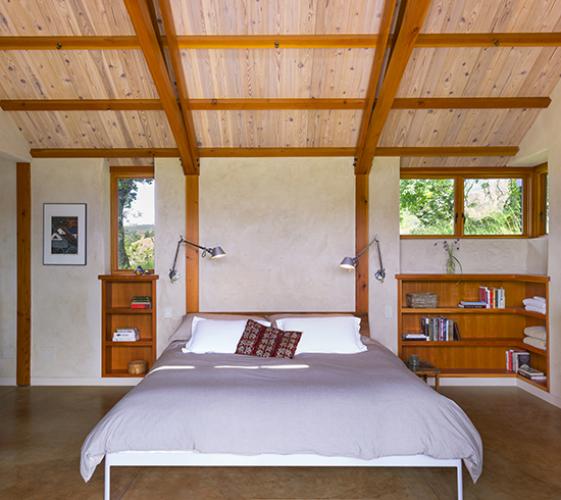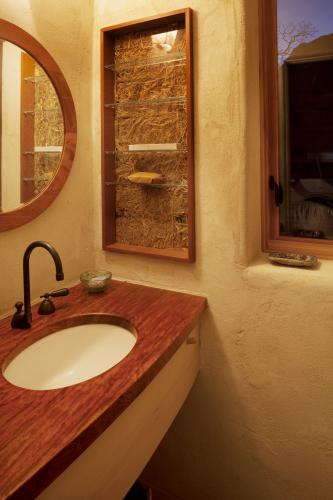The home is nestled along a contour of a natural ‘bowl’ with rocky terrain rising up around the east, north, and west sides, and excellent views to the south and southeast. The upslope portion of the site is rugged – dry in summer and verdant in winter, and studded primarily with stunted blue oaks. There are significant rock formations throughout the site, with clear evidence of volcanic activity.
The buildings follow the topography and capture passive solar heat in the winter months. They feature straw bale walls to the east, north and to the west. Tall ceilings allow the heat to stratify and ample thermal mass in the floors and wall finishes keep the home cool in the summer. During winter the solar hot water collectors on the pool house roof heat radiant floors, warming people instead of the air. Grid-intertied photovoltaic panels provide solar electricity, completing the renewable energy systems.
The material choices for the building include clear-sealed or stained salvaged wood, as well as buff-colored lime plaster on the straw bale walls, and corrugated Corten steel roofing, all of which blend harmoniously with the surroundings. Inside, the Douglas fir posts, beams and trusses are left exposed, adding visual warmth that balances the plaster finish of the main spaces.
A 25 meter lap pool stores water for fire protection and is an integral part of the home’s heating system, and of course a welcome physical as well as visual relief in an otherwise dry, rocky landscape. A small guesthouse including a sauna and all the mechanical systems is located parallel to the pool, screening the solar collectors from views from the main house and terraces.
The seamless integration of the indoors and outdoors—culminating in the corner doors that open the living room to the primary views—capture the full delight of Sonoma County and California living.

